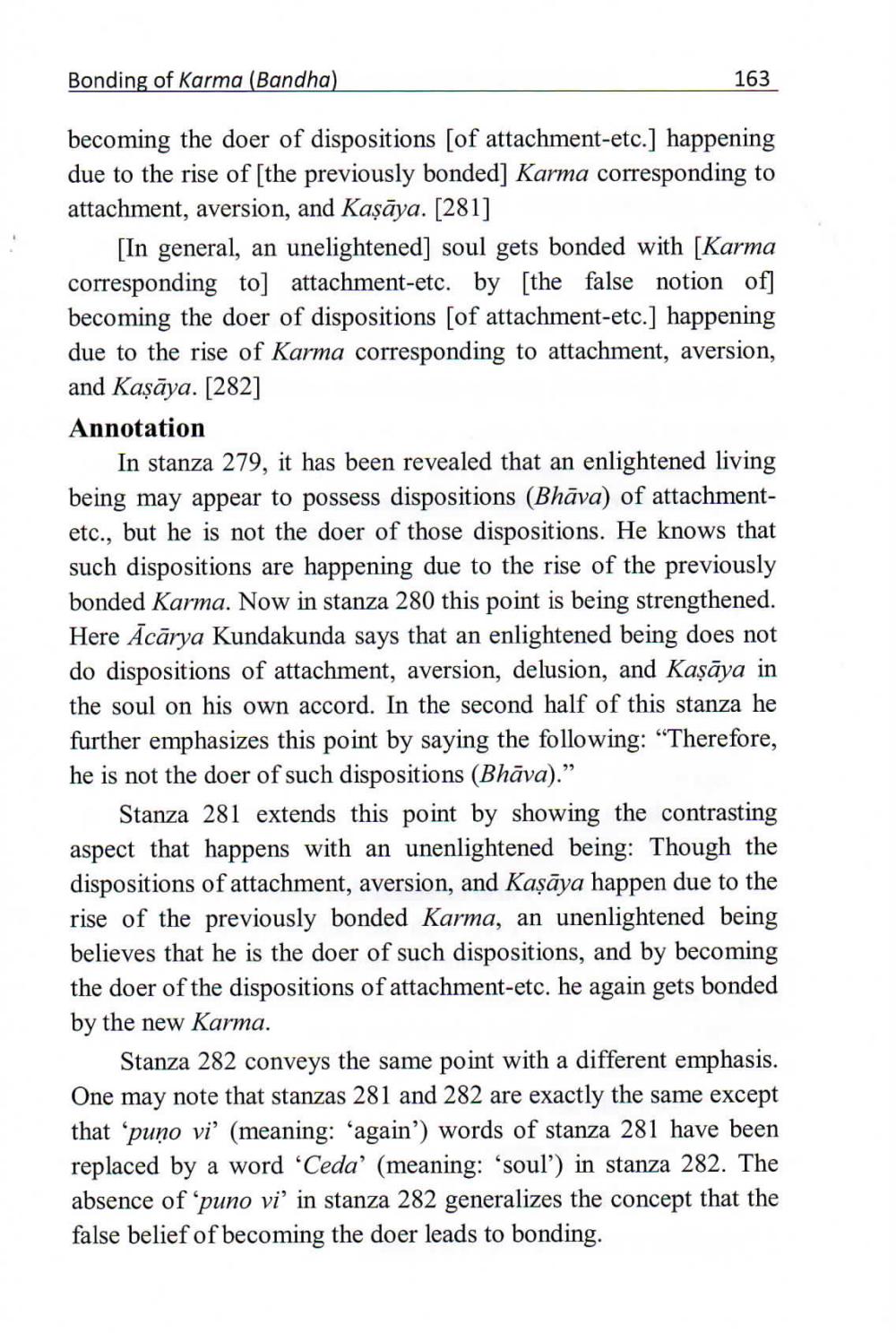________________
Bonding of Karma (Bandha)
163
becoming the doer of dispositions [of attachment-etc.) happening due to the rise of [the previously bonded] Karma corresponding to attachment, aversion, and Kaşāya. [281]
[In general, an unelightened] soul gets bonded with [Karma corresponding to] attachment-etc. by [the false notion of] becoming the doer of dispositions (of attachment-etc.] happening due to the rise of Karma corresponding to attachment, aversion, and Kaṣāya. [282] Annotation
In stanza 279, it has been revealed that an enlightened living being may appear to possess dispositions (Bhāva) of attachmentetc., but he is not the doer of those dispositions. He knows that such dispositions are happening due to the rise of the previously bonded Karma. Now in stanza 280 this point is being strengthened. Here Ācārya Kundakunda says that an enlightened being does not do dispositions of attachment, aversion, delusion, and Kaşāya in the soul on his own accord. In the second half of this stanza he further emphasizes this point by saying the following: “Therefore, he is not the doer of such dispositions (Bhāva).”
Stanza 281 extends this point by showing the contrasting aspect that happens with an unenlightened being: Though the dispositions of attachment, aversion, and Kașāya happen due to the rise of the previously bonded Karma, an unenlightened being believes that he is the doer of such dispositions, and by becoming the doer of the dispositions of attachment-etc. he again gets bonded by the new Karma.
Stanza 282 conveys the same point with a different emphasis. One may note that stanzas 281 and 282 are exactly the same except that “puno vi' (meaning: ‘again') words of stanza 281 have been replaced by a word 'Ceda' (meaning: ‘soul') in stanza 282. The absence of “puno vi’ in stanza 282 generalizes the concept that the false belief of becoming the doer leads to bonding.




